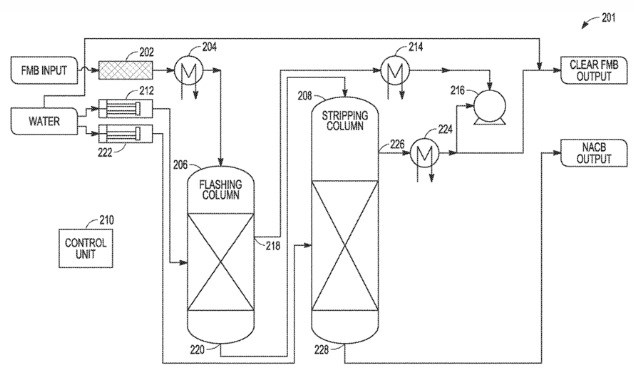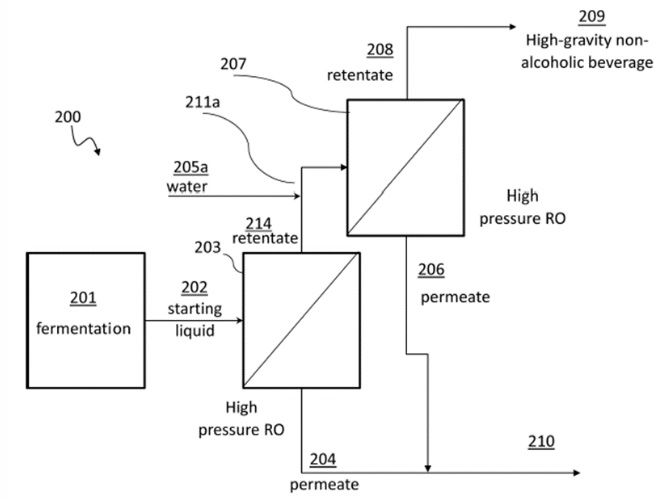From a bitter and watery past has flourished a fruity and vibrant future for low and no-alcohol beers. Gone are the days when these bubbly brews were renowned for their lacklustre taste and uninspiring flavour profile. These days brewers are wielding innovation as their secret ingredient, concocting a flavoursome array of low alcohol beers that cater to the modern Australian's increasingly health-conscious palate.
With an estimated annual growth of 9.16%, the Australian market for non-alcoholic beer is expected to reach total revenue of approximately $289 million by 2027. In light of this, it's no wonder that brewers are willing to fight tooth and nail to defend their brand, as evidenced in the recent Brick Lane Brewing Co Pty Ltd v Torquay Beverage Company Pty Ltd trade mark dispute.
With the rising popularity of these marvellous malts, we decided to take a look "under the hood" at the intellectual property underpinning some of these inventions to shed some light on the remarkable advances that have been made in this field over the years.
First things first, what is a non-alcoholic beer? Contrary to the name, non-alcoholic beers can contain some alcohol. Specifically, according to food labelling standards in Australia, beverages with less than 0.5% alcohol by volume (ABV) are not required to provide information on the label about the alcohol content. While this margin is slight, it allows brewers much needed flexibility in their production methods, some of which necessarily produce alcohol.
Generally speaking, non-alcoholic beers are produced through four main methods: dilution, simulated fermentation, dealcoholisation and controlled fermentation (or a combination thereof).
Dilution
Dilution is by far the simplest method, one you could even try out in the comfort of your own home! This technique is exactly what is says on the bottle – brewers prepare a beer using traditional fermentation methods and then just add water until it has an ABV below the required amount. This has the unfortunate side effect of also watering down any flavour that the beer might have so while it is highly cost effective, brewers have long since found alternative ways to have their beer (flavour) and drink it too.
Simulated Fermentation
Some methods choose to omit a fermentation step entirely, attempting to replicate the flavours of beer through other means. These are often referred to as simulated fermentation, fermentation free or no-fermentation methods. While there are some variations, these methods essentially amount to withholding yeast from the wort during the typical brewing process. The key advantage of this process is that it guarantees a 0% ABV, which can be important in countries where having any ethanol present is prohibited.
However, as you can imagine, fermentation is a complex process and does a lot more for a beer's flavour than just introducing ethanol and bubbles. As a result, it will come as no surprise that beverages produced by no-fermentation methods are often found wanting in the flavour or texture departments. In order to overcome this deficiency, no-fermentation beers often include additives to mimic the flavours, body and mouthfeel of their yeasted counterparts. For example, these additives could be blends of aroma compounds or may be purified extracts from a traditionally fermented beer. An example of this type of additive can be seen in the below claim from granted Australian patent No. 2016425781 owned by Suntory Holdings Limited:
A flavoring agent comprising (A) y-octanolactone, (B) 5- hydroxymethylfurfural (5-HMF), (C) trans-oaklactone, and (D) 4- ethylguaiacol, wherein the above components satisfy the following (l) and (2):
(1) a concentration ratio of the component A to the component B, A/B (ppb/ppb), is 0.009 or more; and
(2) a concentration ratio of the component C to the component D, CiD (ppb/ppb), is 0.1 or more.
The specification states that this flavouring agent provides a "beer-taste beverage" (which can include both alcoholic and non-alcoholic beers) with "rich sweetness and a smoky feel in an excellent balance, and to mask off-flavor or degraded odor". While we cannot verify the truth of this claim, it certainly sounds good on paper.
Dealcoholisation
At its core, dealcoholisation relates to methods which remove the ethanol from a traditionally prepared beer and its various forms are likely the most popular method by which non-alcoholic beverages are produced. This process involves exploitation of differences in physical properties to separate ethanol from the other components of the beer.
Since ethanol has a lower boiling point than water, distillation can be used to extract the ethanol while leaving the water behind. In fact, Anheuser Busch used distillation to produce low alcohol (below 1.2%) "near-beer" during the prohibition era. This was initially done by simply boiling the finished beers until the ethanol content dropped to an acceptable level, a process which inevitably caused major damage to the flavour profile of the beer. The question then became – how do we remove the ethanol without subjecting the beer to such harsh conditions?
Vacuum distillation
One way to do this is by performing the distillation under reduced pressure (i.e. a vacuum), which has the effect of lowering the boiling point of the liquids in the beer. This principle was exploited to excellent effect by the Australian-owned Spinning Cone Column system developed by Flavourtech Pty Ltd in the 80's. This invention works by pouring the liquid down a series of rapidly spinning cone-shaped rotors inside a vacuum chamber, causing the liquid to spread into a thin film. The high surface area and low pressure allows for the gentle vaporization and separation of volatile compounds, preserving delicate flavours and aromas while removing or concentrating specific elements like alcohol. While the patent for this technology expired many years ago, the principle (high surface area of liquid, low pressure, low temperature) is still being used and further developed to this day.
Shown below is a figure from pending US Patent Application No. 17/125,290, which describes a system for converting a standard alcoholic beer (referred to as FMB input in the diagram below) into an alcoholic solution with the same ABV as the input beverage (clear FMB) and a non-alcoholic beer with ABV below 0.5% (NACB output). This application uses a two-stage distillation, where the flashing column removes any volatile flavour compounds with a boiling point below ethanol, (which are collected by condenser 214) before passing the solution to the stripping column, which removes the ethanol. The collected volatile flavour compounds can then be recombined with the non-alcoholic beer portion, cleverly ensuring that the non-alcoholic beer retains as much of the original flavour as possible.

Membrane separation
If flashing and stripping are not to your taste, another option for low temperature dealcoholisation is membrane separation. While there are a many different implementations of this technology, reverse osmosis (RO) is the likely the one most commonly applied in the beer industry. The fundamental principle of reverse osmosis is simple: push normal fermented beer through a semi-permeable membrane which blocks passage of large molecules (such as the flavour and aroma compounds) but allows small molecules (such as water and ethanol) through. The isolated flavour and aroma compounds produced this way are called the "retentate" and the liquid that passes through is called the "permeate". Typically, water is then be added to the retentate to produce a beer which retains much of the original flavour but with a much lower ethanol content. Many brewers also opt to add portions of the permeate back into the retentate, in order to tailor the ABV of the final product.
Similarly to vacuum distillation, despite this technique being used in the beverage industry for decades, it continues to spark further innovation. One example of this is the system described in recently accepted Australian patent application No. 2020234694, which uses a series of reverse osmosis vessels to produce a "high gravity" non-alcoholic beverage (such as beer). Claim 1 of this application recites:
A method for producing a high gravity non-alcoholic beverage from a starting liquid having an ethanol component, the method comprising:
providing a set of reverse osmosis pressure vessels, each pressure vessel having a feed inlet for a feed stream, a retentate outlet for a retentate stream, and a permeate outlet for a permeate stream, the set having a first pressure vessel;
providing the starting liquid to the feed inlet of the first pressure vessel;
adding water at a blend point when ABV content in a selected one of the permeate streams exceeds ABV content of a retentate stream at the blend point; and
obtaining the high gravity non-alcoholic beverage from a selected one of the retentate streams.
Compared to conventional reverse osmosis methods, this invention uses higher pressures and minimal water addition, causing the ethanol level in the retentate to remain relatively high throughout the process. This promotes passage of the ethanol through the membrane and ultimately allows this method to maintain a significantly higher ethanol permeation rate compared to other methods. In an embodiment of the invention (see the below Figure 2 taken from the specification), a fermented beer 201 is passed through a first high pressure reverse osmosis (RO) vessel (203) and the resulting retentate is then blended with additional water and passed through a second RO vessel (207) to produce the "high-gravity non-alcoholic beverage". This concentrated product can then be diluted with water or permeate to produce a no- or low-alcohol beer.

Controlled fermentation
Due to the complexity of the fermentation process, there are a lot of dials for an enterprising brewer to tweak, and many of them can result in a reduction in the amount of ethanol that is produced. For example, some methods simply opt for a very short fermentation, keeping a close eye on the ethanol content and aborting the fermentation process when it reaches a predetermined amount. Other methods such as the so called "cold contact fermentation" introduced by Fritz Schur in 1983 (and previously protected in Australia under patent No. AU1982083030), use cold (near 0°C) temperatures and short contact times during the fermentation process to minimise ethanol formation. One particularly interesting method is performing the fermentation with a strain of yeast that is not able to efficiently convert the sugars in the wort into alcohol.
Traditional beers are usually produced using one of two yeast species: Saccharomyces cerevisiae (ale yeast), or Saccharomyces pastorianus (lager yeast). Within these species there are many strains with different properties, but most of them are able to ferment the majority of fermentable sugars within the wort, which are glucose, fructose, sucrose, maltose and maltotriose. In a typical wort, maltose will represent about half of the fermentable sugars, followed by maltotriose and glucose at around 20%, with sucrose and fructose combined accounting for less than 15-20%. In light of the above, the aspiring brewers among you will no doubt recognise that if one were to obtain a yeast strain that is unable to ferment higher order sugars (i.e. sucrose, maltose, and/or maltotriose), the resulting beer would have a significantly reduced ethanol concentration. While this is true, an unfortunate result of this reduced activity is that the amount of flavour and aroma compounds produced also decreases, resulting in a bland beer.
However, the world of yeasts is vast, and by carefully selecting the strain and the brewing conditions, it is possible to overcome this deficiency. As an example of this, we turn to Australian patent No. 2014224578, which describes the use of the yeast Pichia kluyveri to produce a non-alcoholic beer with similar levels of key flavour compounds as traditional beers. Claim 1 of patent No. 2014224578 is as follows:
A method of preparing a low-alcohol or alcohol-free beverage with an alcohol content of no more than 1.2% (vol/vol) comprising the steps of
a) providing a wort; and
b) fermenting the wort with at least one Pichia kluyveri yeast strain to obtain the low-alcohol or alcohol-free beverage.
Among non-Saccharomyces yeasts, Pichia kluyveri is known as a slow fermenting strain used in the wine industry to improve the composition of aromatic compounds such as thiols, terpenes, and fruity esters. Crucially, P. kluyveri primarily consumes glucose, is not able to utilise maltose or maltotriose and has a propensity for producing glycerols or acids from glucose, rather than ethanol. Interestingly this inability to utilise maltose presented a unique issue in the above method – since the beer still contains a high concentration of fermentable sugars, it represents a fertile ground for other, more aggressive and alcoholically inclined yeasts to move in, which would quickly result in beer with a little more kick than desired. Accordingly, the inventors had to take special care throughout the brewing process to ensure that it is performed in sterile conditions. They also carefully controlled the mashing conditions (the step that produces the wort) to optimise the glucose concentration, maximising the amount of food for their chosen yeast. Fortunately, this extra effort seems to pay off, as the resulting beer exhibited similar amounts of key flavour compounds compared to the Saccharomyces cerevisiae-fermented control (a Carlsberg pilsner) and had significantly more of these compounds than non-alcoholic beer produced using other methods (such as those discussed above).
Summary
The techniques discussed above are but some of the many innovations explored by brewers to meet the needs of a rapidly growing industry. It goes without saying that while we have presented these as isolated methods, modern breweries often use them in combination to craft a beer with the desired flavour profile and mouthfeel. While the path to the perfect pint may be a long one, it is clear that no keg will be left untapped along the way. We hope this article inspires you to treat your taste buds to a non-alcoholic beer next time the "hopportunity" arises, you'll be thanking yourself in the morning.
The content of this article is intended to provide a general guide to the subject matter. Specialist advice should be sought about your specific circumstances.



